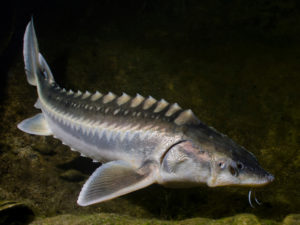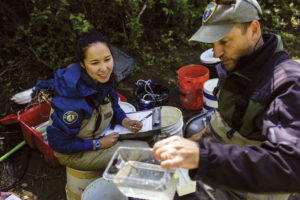Steelhead are coming to spawn in a stream near you. If you’re lucky, you may see some making their way upstream. Like salmon, steelhead trout (Oncorhynchus mykiss) start their lives in fresh water, go to sea, and then return to their natal streams to reproduce.
During the spawning season from January through April, female steelhead build redds (gravel nests) at the top of a riffle and lay their eggs. The young fry stay in the stream for several years before heading out to sea, where they bulk up for one to four years and turn silvery like salmon before returning to spawn.
Unlike their salmon cousins, which die after spawning, steelhead can return to the sea and live to spawn another day. (And, also unlike salmon, if there’s an obstacle that prevents a steelhead from getting to sea, the trout simply stays in freshwater. In that case, it’s called a rainbow trout.)
Cool, clean water is essential for the survival of steelhead during all portions of their life cycle, and they need access to good spawning sites for reproduction. Due to habitat loss, the Central California Coast steelhead population (which includes San Francisco Bay) is considered threatened under federal law. Many restoration efforts are underway to return steelhead to parts of streams where they’ve been excluded by dams and other obstacles.
Small populations of steelhead persist in several San Francisco Bay tributaries including Alameda Creek in Alameda County; the Guadalupe River in Santa Clara County; San Francisquito Creek in San Mateo County; Corte Madera, San Anselmo, and Miller creeks in Marin County; and in coastal streams including the Russian River system, Scott Creek (Santa Cruz County), and Lagunitas Creek (Marin County).

.jpg)


